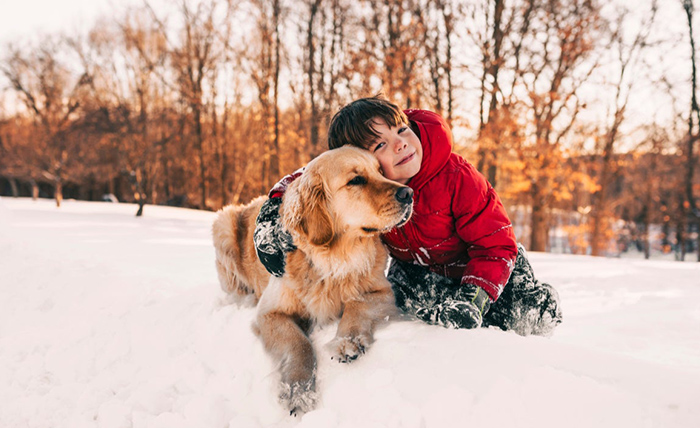Keeping Your Pet Safe this Winter
As the temperatures begin to drop, you need to take some extra precautions to keep your pet safe from the cold. Lake Elmo experiences extreme weather conditions every year, and Cedar Pet Clinic has treated pets for all kinds of weather-related injuries. Having experienced many cold Minnesota winters, we are here to provide you with some basic tips to keep your pets safe this year.
Protecting Your Pet’s Paws
Your pet’s paw pads are particularly vulnerable in the winter. Unlike us, many pets do not wear shoes when they go outside. The cold air and icy conditions can dry out the paw pads and lead to cracking. In severe cases, paws can start to bleed or become infected. To avoid this, check your dog’s paw pads regularly. If you notice their feet seem a bit sore, limit the amount of time they spend outside.
Your pet may also experience paw pad burns. This is most commonly seen in dogs who frequently walk along roads or sidewalks. The chemicals used to melt ice can irritate the paws and even cause chemical burns. If you are purchasing ice melt for your home, look for pet-friendly options. Additionally, it is always a good idea to thoroughly wipe your pet’s paws when you return home to remove any chemicals you may have unknowingly encountered.
If your pet is prone to paw pad injuries or will be spending a considerable amount of time outside, booties can help keep your pet’s feet protected. Make sure the booties fit appropriately to prevent your pet from developing boot rubs. It may take some time for your pet to get used to their new shoes. Let them take the boots for a test spin in the house and gradually increase the amount of time they wear them.
Limit Exposure to Extreme Temperatures
Just like us, animals are at risk of developing hypothermia and frostbite if they become too cold.
The signs of hypothermia can vary between species, but general symptoms include lethargy, weakness, and shivering. In the early stages of frostbite, exposed areas may be red and painful. As the damage sets in, these areas will get darker and necrotic. It can take some time to see the extent of frostbite damage, so it is essential to get your pet treatment as soon as you suspect a problem. Likewise, if you suspect an animal is suffering from hypothermia, it is crucial to seek veterinary care immediately.
To keep your animals safe, limit their exposure to extreme temperatures. Bring your pets in at night and limit the amount of time they spend outdoors during the day. If you have chickens or ducks, ensure their coops are properly insulated to keep them as warm as possible. For more information on protecting domestic fowl from extreme conditions, you can visit our article on the topic here.
